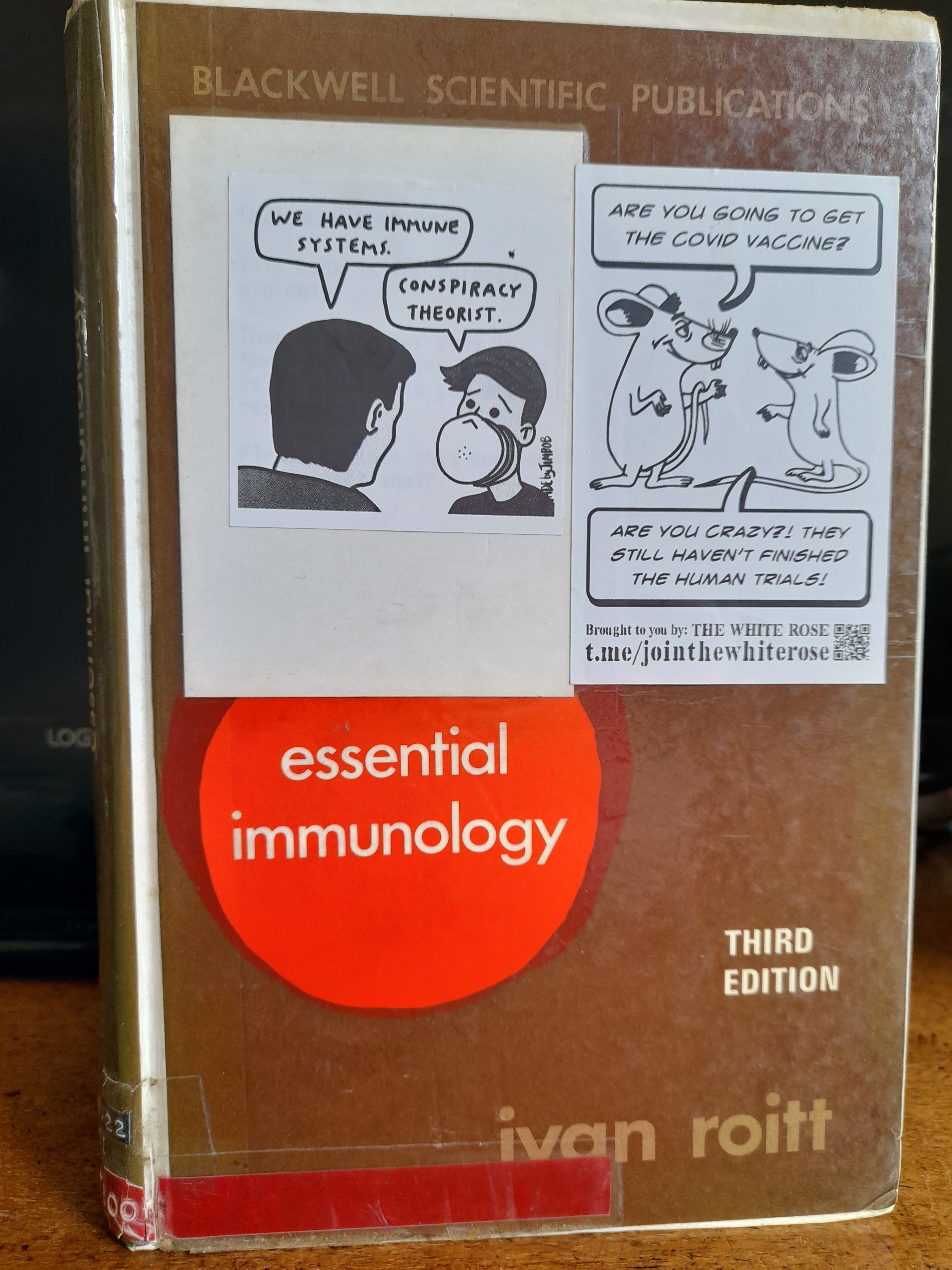The latest Public Health England (week 36 / 2022 at time of writing) reports are showing that in some age groups the rates of COVID infection are higher in vaccinated patients than unvaccinated. The report states, "In individuals aged 40 to 79, the rate of a positive COVID-19 test is higher in vaccinated individuals compared to unvaccinated."
(Update Note - December 2024 - the observation that infection rates in vaccinated groups are higher than unvaccinated has been confirmed by a number of different studies including - Behavioral and Health Outcomes of mRNA COVID-19 Vaccination.)
The results of this report has been highlighted recently by the ITV News reporter, Robert Peston who despite being double-vaccinated became ill with COVID. He wanted to know how common his experience was, and he was surprised by what he found. He says, “I am surprised these statistics have received so little attention and have occasioned so little debate.”
According to government official UK reports, case rates per 100,000 are now double in the double vaccinated population compared to the unvaccinated for people aged 40 to 79. A review of COVID immunity studies published by Brownstone asks how effective immunity is following COVID recovery relative to vaccination? This follows an Israeli study that found that the vaccinated have a 27 times higher risk of symptomatic infection than the COVID recovered. The study also found that the vaccinated were nine times more likely to be hospitalised for COVID. On the other hand, a CDC study claims that patients who have recovered from COVID are five times more likely to be hospitalised for COVID than the vaccinated.
As Harvard's Professor of Medicine, Dr Martin Kulldorff points out, "Both studies cannot be right".
Reasons why COVID vaccines don't work
There are a number of peer-reviewed publications describing the immune models, and reasons why mRNA vaccination may not be as effective as originally hoped. These models include the following:
1. The well reported drop in white cell count (neutrophyls) immediately following vaccination.
2. Immune focus on a single antigen (spike protein) and associated variant selection causes vaccine break-through. The explosion in the number of new variants following vaccination is being monitored by the international collaboration of scientists, Nextstrain. There are millions of complete SARS-CoV-2 genomes available and this number increases every day.
3. Antibody dependent enhancement; anti-SARS-CoV-2 antibodies could actually exacerbate COVID-19 through antibody-dependent enhancement (ADE). ADE is a reminder that not all antibody responses are helpful and some can be harmful.
4. Vaccine induced auto-immune responses including VITT. As reported by JAMA Neurology, circulating platelet-activating platelet factor 4 (PF4) antibodies have been found in many patients suffering from vaccine-induced immune thrombotic thrombocytopenia (VITT). This is probably caused by injection components binding with the person's own platelet factor to create a 'neo-antigen'. This neo-antigen is what then causes an immune response resulting in clotting, intracerebral haemorrhage and the death of around half of those people affected.
5. Natural immunity provides better protection; there is increasing evidence that natural immunity is more powerful and broader in terms of preventing infection. The largest study yet comparing COVID vaccines to natural infection has produced results that would have surprised no one 50 years ago.
6. A jab in the arm can't work. According to the Journal of Immunology, "The route of vaccination is important in influencing immune responses at the initial site of pathogen invasion where protection is most effective". Molecular immunologist, Professor Edward Steele points out that a jab in the arm cannot protect against a mucosal viral invasion - purely on the basis of first principles. It is an antibody known as IgA predominantly found in our nasal, lung and gut mucosa that is responsible for the first line of defence against respiratory infections. Unless the IgA is activated the vaccine simply can't work. This observation would seem to demonstrate a fairly fundamental flaw in the inoculation method.
7. Vitamin D deficiency; T-cells can only fight viral infections when there is sufficient vitamin D present. When a T-cell is exposed to a pathogen such as a virus, it extends a signalling device or 'antenna' known as a vitamin D receptor, with which it searches for vitamin D
8. The spike protein may itself toxic and prevent DNA repair; a recent study that looked at what actually happened to the spike protein has demonstrated a potential molecular mechanism by which the spike protein might impede adaptive immunity and underscore the potential side effects of full-length spike-based vaccines. The spike protein appears to localise in the nucleus, and here it inhibits DNA damage repair by impeding key processes.
9. Compared to unvaccinated individuals, vaccinated individuals are more likely to become infected with Sars-Cov-2 as the virus becomes largely resistant to the potentially neutralising vaccine induced antibodies. This is because, among other things, non-neutralising vaccine induced anti-spike antibodies actually facilitate entry of SC-2 into human epithelial cells of the upper respiratory tract.
10. According to the Journal of Immunology Original Antigenic Sin, or OAS.
The point is that the immune system is far more complex than we are often lead to believe, and tinkering with it at a mass-population level, thereby profoundly disturbing the viral-host ecosystem, could have consequences.
 What is original antigenic sin?
What is original antigenic sin?
The body's immune system can normally recognise foreign infectious material from the types of structures displayed. These structures that can cause an immune response - such as the production of antibodies are known as antigens.
The virus 'variants' vary because they have slightly different or modified antigenic structures around their surfaces. Evolution will normally select for those viruses with antigenic structures that evade or are not recognised by the immune system.
The first (original) exposure of the immune system to an antigen (or the 'pioneer' strain) is critical for how immunity will subsequently develop, and the composition of the antibody repertoire (i.e. the quality of your defence mechanisms). The more surface antigens that the immune system responds to, the more 'memory' the immune system will have for dealing with subsequent infections.
 Natural immunity v. mRNA vaccines
Natural immunity v. mRNA vaccines
The concern is that a narrow-spectrum vaccine with suboptimal antibodies that only recognise the spike protein of the virus and not the other sections such as the "N" or nucleocapsid part of the virus, could impact on natural immune responses. The spike protein will cause B cells in those with the vaccine to learn to produce only spike protein antibodies. These antibodies may be slower-acting or less sterilising than the N antibodies, which may be faster and more effective.
The opening lines of the famous 'Essential Immunology' 3rd Edition - (see pic NB the cartoons are not original textbook artwork, but have been applied by appreciative students), by Professor Ivan Roitt state, “Memory, specificity and recognition of ‘non-self’ – these lie at the heart of immunology. Our experience of the subsequent protection (immunity) afforded by exposure to many infectious illnesses can in fact lead us to this view”. Pretty much all the evidence points at this statement being true. However, the nature of that first immune priming could be critical. A sub-standard prime could be the cause of the concept of ‘original antigenic sin’. This biological phenomenon could be problematic for a vaccine with only a single (spike protein) antigen.
If memory B cells (the cells responsible for producing antibodies) respond to an infection with a related, but antigenically distant pathogen, the memory response can not only be ineffective but possibly diminish the effectiveness of naive B cells capable of producing neutralising antibodies. It is understood that this potential downside of immune memory must be considered when attempting to design vaccines incase a vaccine formulation induces an immunological setback that prevents protective immunity to a new strain of virus.
So, if OAS plays such an important function in preventing subsequent infections, the nature of the first (original) antigenic stimulus (or vaccine) is potentially also a fundamental factor for preventing subsequent infections. the vaccine may produce an initial immune response, but OAS may then impact on subsequent responses to variants.
Neanderthal ancestry may provide greater protection
NB OAS in this sense should not be confused with the other OAS1, or oligoadenylate synthase 1 which, is a type of protein. However, OAS1 (the protein) and associated genes, have also been demonstrated to play an important role in our natural defence against RNA viruses. From an evolutionary perspective, what is even more interesting is that the type of OAS1 that lends the greatest protection is associated with Neanderthal man.
As reported in the journal Nature; measuring OAS1 levels found that higher plasma OAS1 levels in a non-infectious state were associated with reduced COVID-19 susceptibility and severity. Further analyses suggested that a Neanderthal isoform of OAS1 in individuals of European ancestry affords this protection. Thus, evidence supports a protective role for OAS1 in COVID-19 adverse outcomes. Available pharmacological agents that increase OAS1 levels could be prioritized for drug development.
Furthermore, when comparing population statistics such as 'case' rates or treatment or vaccine outcomes, the relative prevalence of OAS1 in the groups should be included in order to help ensure fair comparisons. Otherwise, the risk is that those groups with higher Neanderthal ancestry will appear to have responded better.
The risk of induced 'sin'
Returning to OAS in the sense of 'original antigenic sin', and looking at the work required to create effective vaccines against viruses without risk of inducing 'sin', the 2019 Journal of Immunology paper concludes stating:
Recently, there has been a major expansion in research and funding dedicated to the development of better and more broadly protective influenza virus vaccines. This, in turn, has catalyzed substantial renewed interest in defining the mechanisms governing OAS and the influence that pre-existing immunity exerts on subsequent vaccine responses. Although many specific instances wherein OAS-like responses have been observed, both experimentally and during natural influenza virus epidemics, have been studied in great detail, a holistic and predictive model of the situations in which OAS responses occur is far from being realized. To accomplish this goal, considerable effort will need to be directed to understanding the complex interactions between Abs, cell types, and Ags that ultimately determine response outcomes.
Abs = antibodies
Ags = antigens
More boosters?
So, the theory would suggest that the better the vaccine, the fewer the number of boosters required. There is also a question over increasing the number of boosters with what is already a sub-quality 'immune prime' compared to a natural infection.
A bacterium, virus, or other microorganism that can cause disease.
Full medical glossary



